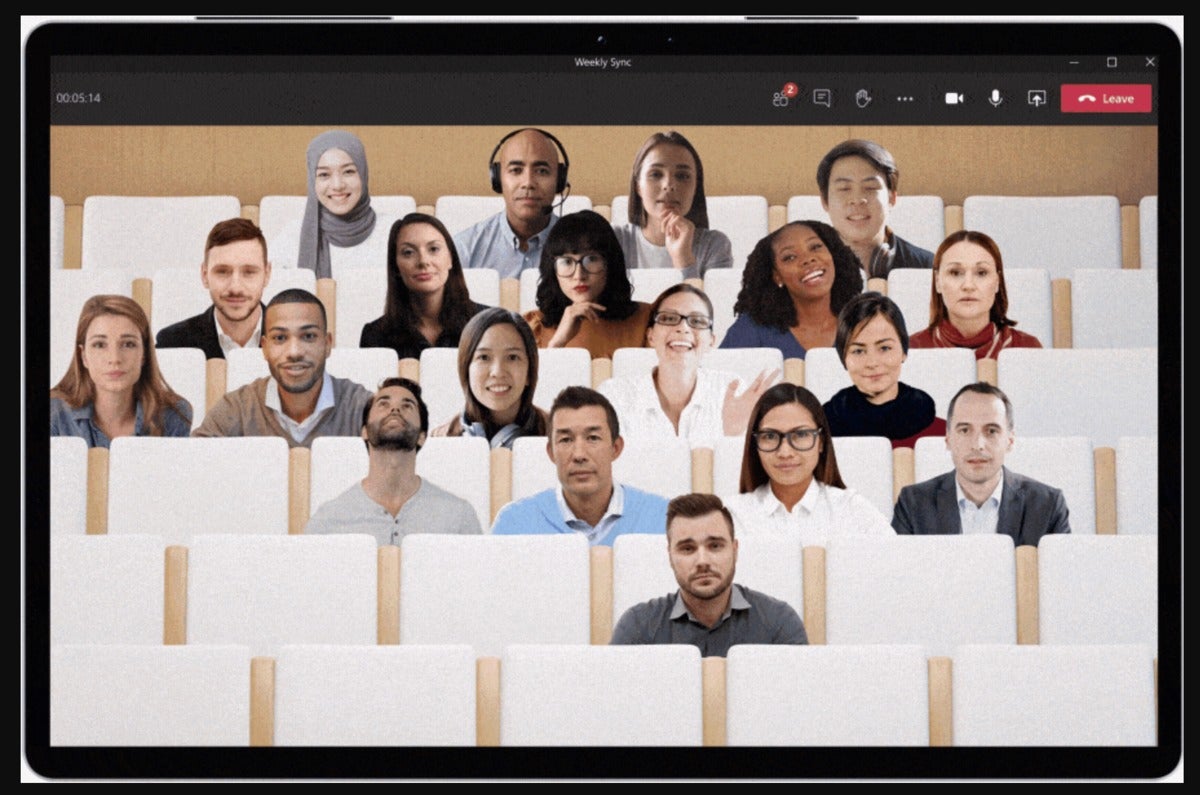Microsoft will enable Teams users to overlay a presenter’s video feed when displaying content such as slides – part of its aim to improve meetings as the number of video calls rockets during the pandemic.
The feature, due out later this year, is among a handful of updates to the Teams collaboration platform unveiled at Microsoft’s Ignite conference Tuesday. The company also highlighted enhancements to office-based meeting tools and new capabilities to promote employee wellbeing.
The custom layouts feature lets users place a video feed of a meeting presenter onto the foreground of a PowerPoint presentation, thanks to the same artificial intelligence segmentation technology used in Teams background blur and Together mode. This will enable meeting participants to view the presenter’s hand and face gestures, as well as allow for weather forecaster-style highlighting of content.
“It's almost like setting up the room, in a physical sense, for how I will present and what I have to show you, and that really gets past this idea that everything has to be the same with just a Brady Bunch view and a whole bunch of squares,” said Jared Spataro, corporate vice president for Microsoft 365, during a pre-recorded briefing.
There are also changes to the Together mode, first announced in July, including new “scenes” later this year that will mimic conference rooms and coffee shops. The ability to automatically scale and center participants in their virtual “seats” will be added; that's designed to help make the virtual experience more real when individuals are sitting too far from their cameras, Microsoft said.
Other video features include the addition of breakout rooms - a highly requested feature also due to arrive by the end of 2020.
Microsoft said it wants to improve the Teams meetings experience in offices with the addition of “touchless” technologies – including the ability to use the Teams mobile as a remote for Microsoft Teams Rooms devices. That allows users to join and leave meetings, turn cameras on and off, and adjust audio volume without touching a central console. (Microsoft’s Cortana voice assistant can be used for the same purpose.)
The changes are welcome, said Larry Cannell, a research director at Gartner, though he argued that reducing the burden on employees should be the top priority.
According to Microsoft’s research, Teams users have been involved in 55% more meetings and calls per week as of the end of August. That increase comes as many people shifted to working at home after companies shuttered offices amid the COVID-19 outbreak.
“The new meeting experiences coming from conferencing vendors are fun and can make meetings a little less taxing,” said Cannell. “Without question, many online group scenarios benefit from these new meeting features. For example, anything that makes a teacher’s job easier is fantastic.
“However, for most knowledge workers the best meetings are the ones that don’t take place," he said. "Remote work needs to get beyond having countless meetings and to helping people move previous in-office collaboration to online workspaces.”
Employee wellbeing and performance tracking
Other announcements at Ignite include efforts by Microsoft to help employees manage stress levels when working remotely. A Microsoft Research survey highlighted the importance of the commute in providing a space for reflection - an opportunity that many have missed out on during the pandemic.
To help tackle that issue, Microsoft plans to integrate with Headspace, a popular meditation app, bringing a “curated set of mindfulness experiences and science-backed meditations” into the Teams apps.
Meanwhile, Microsoft also wants to make it easier for managers to track collaboration and communication levels among workers, making the Workplace Analytics app available directly within Teams. This gives bosses greater insight into meeting effectiveness and potential communication bottlenecks between teams of workers.
Microsoft said the Workplace Analytics app will also be able to provide suggestions to workers via Teams, such as reducing meeting overload and switching off at the end of the workday.






